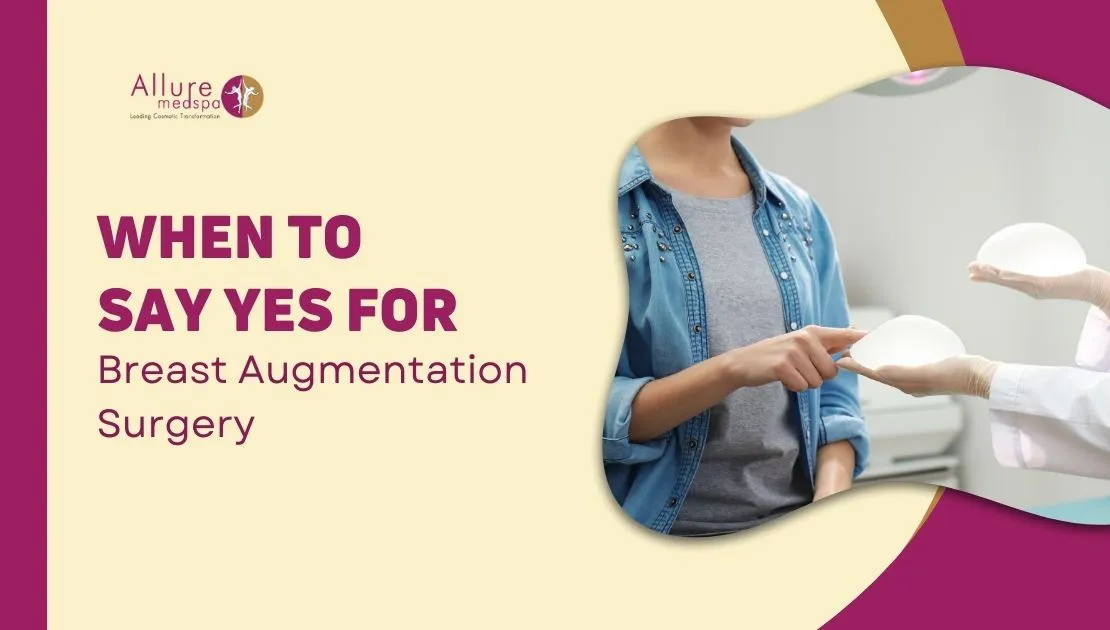Breast Augmentation in Mumbai: When to Consider It & What to Expect
Thinking about breast implants? Here’s a clear, patient-friendly guide to who it’s for, timing, safety, recovery, and answers to the most common questions.
Table of Content
- Introduction
- When Should You Consider Breast Augmentation?
- Important Considerations Before Surgery
- Conclusion
- Contact & Appointments
- Frequently Asked Questions (FAQs)
Introduction
Every woman deserves to feel confident in her own skin. Breast augmentation can enhance volume, shape, and symmetry, helping many women feel more balanced and self-assured—in clothes and out. If you’re considering implants, use this guide to understand timing, benefits, and the key decisions that lead to great, natural-looking results.
When Should You Consider Breast Augmentation?
1) Low self-esteem from size or asymmetry
If you’ve always felt your breasts are too small or noticeably uneven, implants (saline or silicone) placed beneath the breast tissue or chest muscle can improve proportion and symmetry.
Result: Fuller, more proportionate contours that complement your frame.
2) A confidence boost & body balance
Implants can refine your overall silhouette and restore a more feminine profile. Many patients report feeling more confident in fitted clothing, swimwear, and during intimacy.
Result: A balanced, contoured figure—with confidence to match.
3) Changes after pregnancy, weight shifts, or aging
Volume loss is common after pregnancy or significant weight change. Augmentation can restore lost fullness and shape, and it can be combined with a lift if there is significant sagging.
Result: Renewed shape and personal well-being.
4) Popular ages—and why
Women of many ages choose augmentation. It’s common in the 30s–40s (often after childbirth or weight shifts), but excellent results are possible in the 20s and 50s+ with the right plan.
Tip: Book a consult to tailor choices to your anatomy and goals.
5) Planning around pregnancy & breastfeeding
Pregnancy can change breast size/shape whether or not you have implants. Most women can breastfeed after augmentation, but it isn’t guaranteed. If you plan to become pregnant soon, you may prefer to wait; many still proceed now and consider a small revision years later if needed.
Important Considerations Before Surgery
Choosing your implant size & profile
- Measurements (chest width, tissue stretch, base diameter) guide safe, natural sizing.
- In-office sizers or 3D imaging help visualize proportions under clothing.
- Profiles (low to high) influence projection—your surgeon will match these to your frame.
Implant type, placement & incision
- Type: Silicone gel typically feels more natural; saline allows smaller incisions and easy volume adjustment.
- Placement: Submuscular may look more natural in thin patients; subglandular can suit those with more tissue.
- Incisions: Inframammary fold (most common), periareolar, or transaxillary—chosen to balance access and scar concealment.
Recovery & return to activities (typical ranges)
- Light daily activities: 1–3 days
- Desk work: ~3–7 days (as comfort allows)
- Exercise/heavy lifting: avoid for ~4–6 weeks; follow your surgeon’s plan
- Travel/flying: usually after early follow-up and medical clearance
Timelines vary. Your surgeon will personalize restrictions and clearance.
Sensation changes & pain control
Temporary changes in nipple/skin sensation can occur and typically improve over weeks to months. Discomfort is usually well controlled with prescribed medications and gentle activity progression.
Longevity, monitoring & maintenance
- Breast implants are not lifetime devices. Many last 10–20+ years; replacement may be needed for issues (e.g., rupture, capsular contracture) or aesthetic updates.
- Silicone implants may require periodic imaging (e.g., ultrasound/MRI) to assess integrity—your surgeon will advise a schedule.
- Know rare but important risks associated with specific devices (e.g., BIA-ALCL with certain textured implants). Your surgeon will review device-specific safety.
Conclusion
Breast augmentation can be life-enhancing—when it’s thoughtfully planned, skillfully performed, and tailored to you. Choose a board-certified surgeon, communicate your goals clearly, and align expectations with a safe, natural-looking outcome.
Contact & Appointments
Allure MedSpa (Mumbai)
- 📞 +91 82918 63159 | 022-4012 4969 | +91 77386 25259
- 📧 alluremedspaenquiry@gmail.com
Follow us: Facebook · Instagram · Twitter · LinkedIn
Frequently Asked Questions (FAQs)
Q1. How long do breast implants last?
Ans. Implants are durable but not considered lifetime devices. Many last 10–20+ years. Your surgeon will monitor with exams (and, for silicone, periodic imaging) and advise if/when replacement is appropriate.
Q2. Is breast augmentation safe?
Ans. When performed by a qualified surgeon using approved devices and proper technique, augmentation has a strong safety profile. As with any surgery, risks include infection, bleeding, changes in sensation, capsular contracture, and implant rupture; your surgeon will review these and how they’re minimized.
Q3. Will I have visible scars?
Ans. Incisions are typically placed in natural creases (inframammary), around the areola, or in the armpit. Scars fade over time but are permanent; good scar care helps them mature discreetly.
Q4. Can I breastfeed after getting implants?
Ans. Most women can breastfeed after augmentation. Incision location and technique may influence this—tell your surgeon if future breastfeeding is a priority.
Q5. What’s the difference between saline and silicone implants?
Ans. Saline implants are filled with sterile salt water, can use a slightly smaller incision, and feel a bit firmer. Silicone gel implants tend to feel more natural. Your anatomy, goals, and exam findings guide the choice.
Medical disclaimer: This content is educational and not a substitute for in-person medical advice, diagnosis, or treatment.











